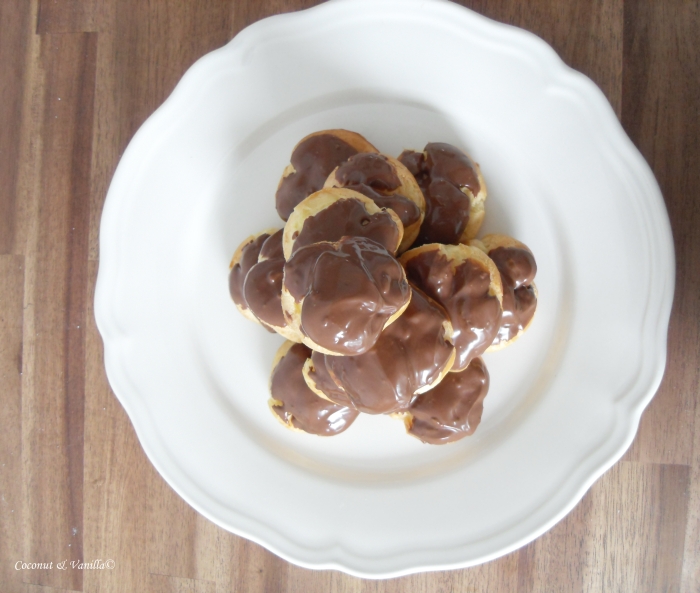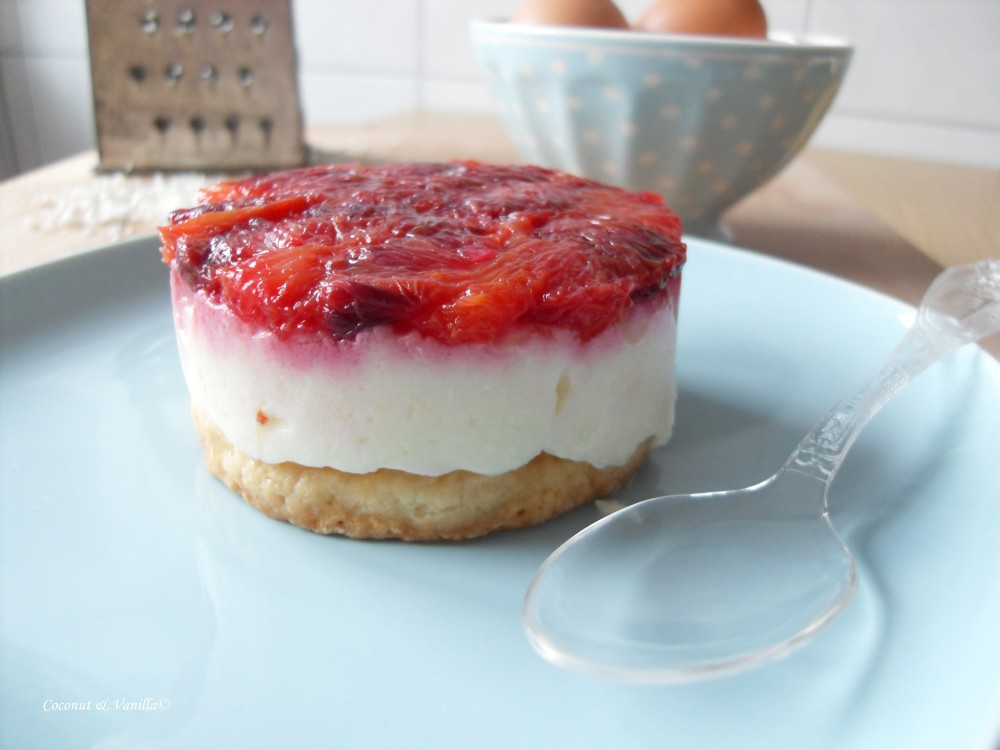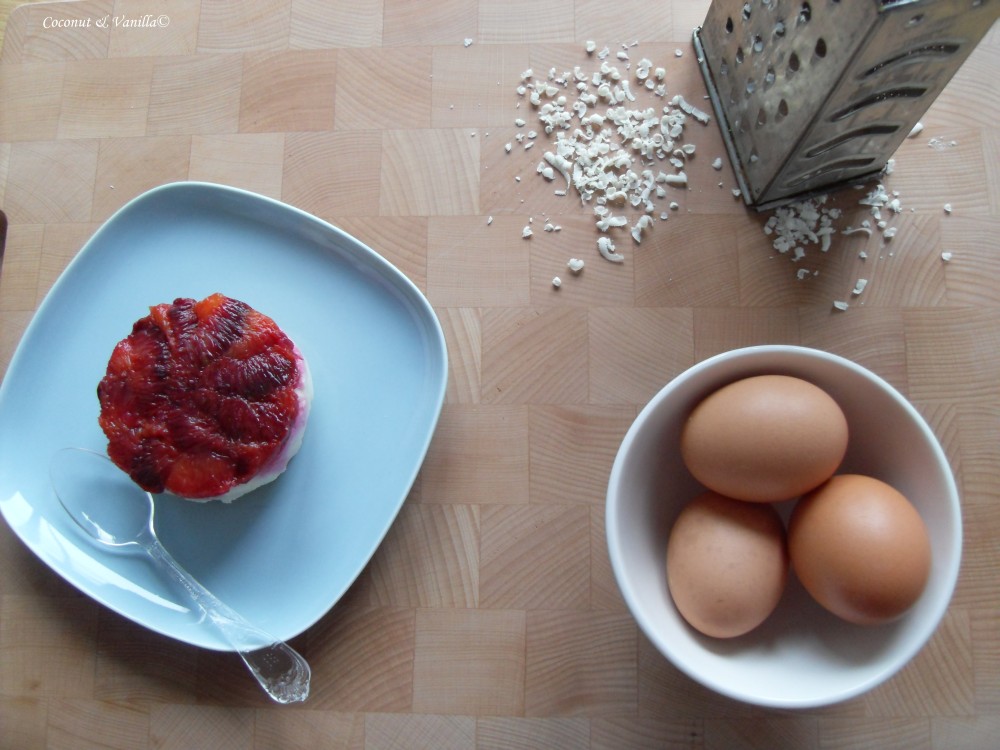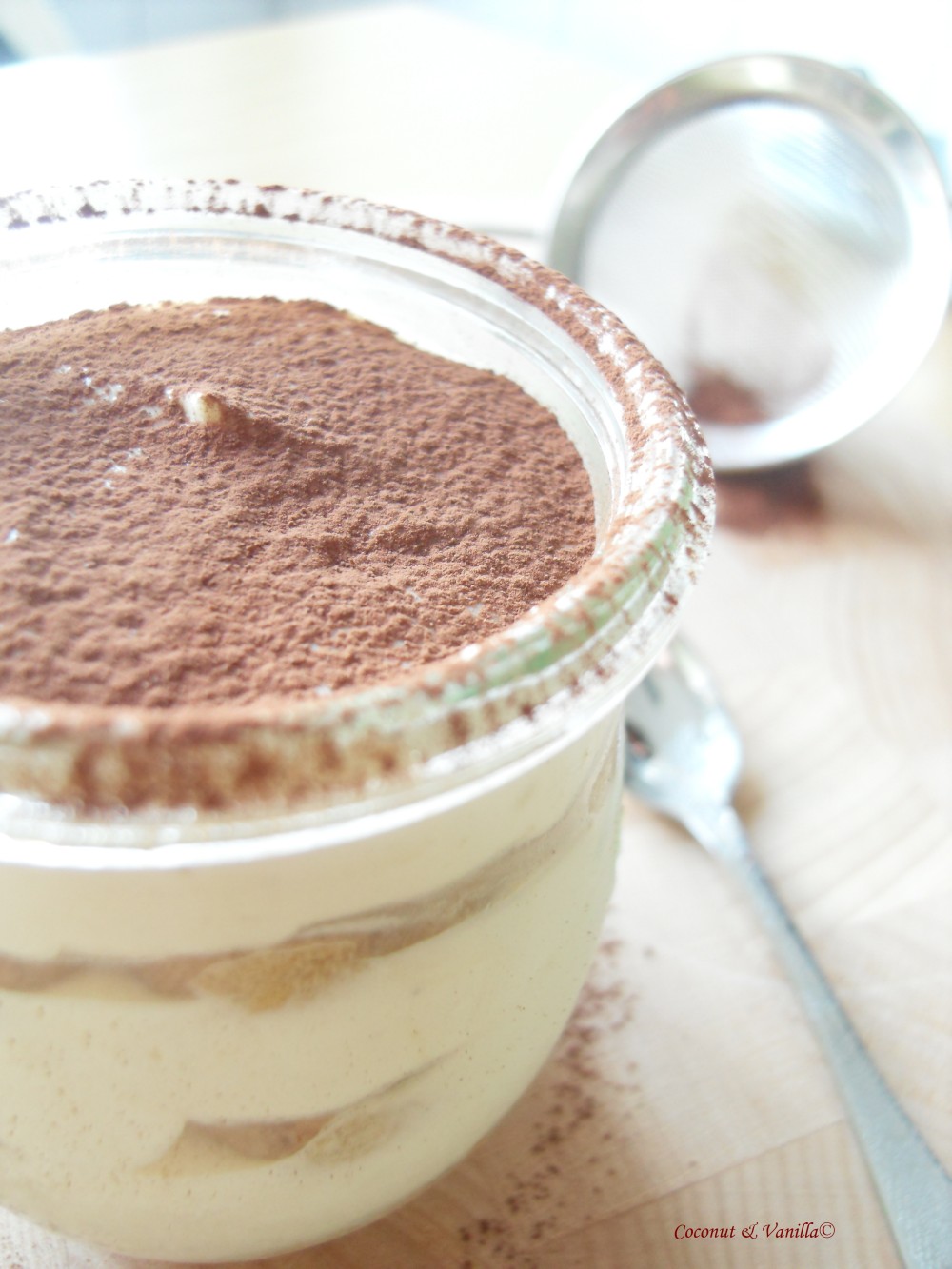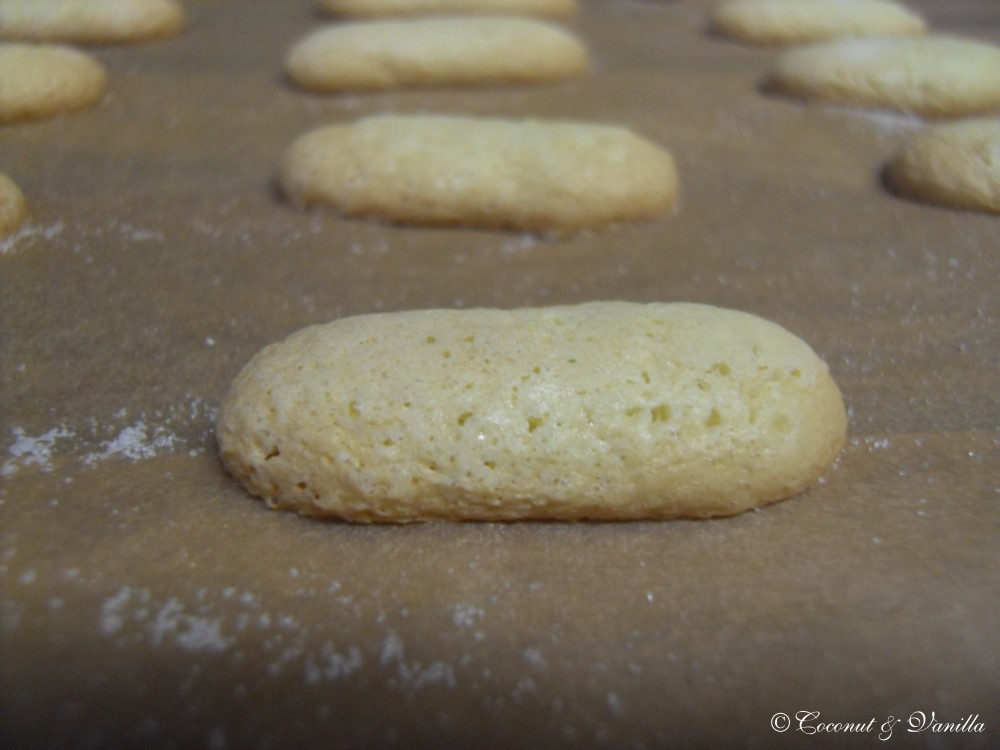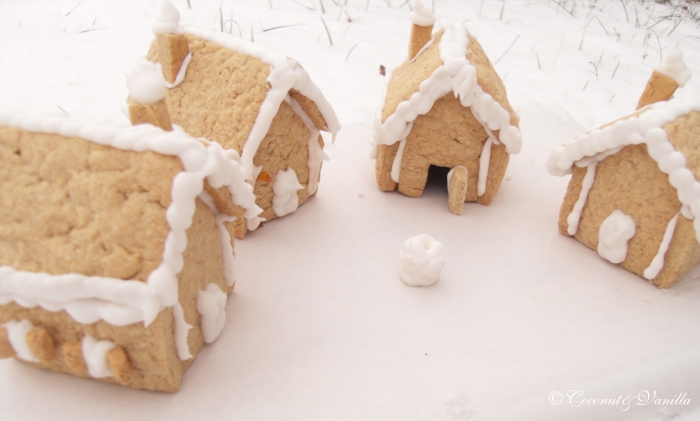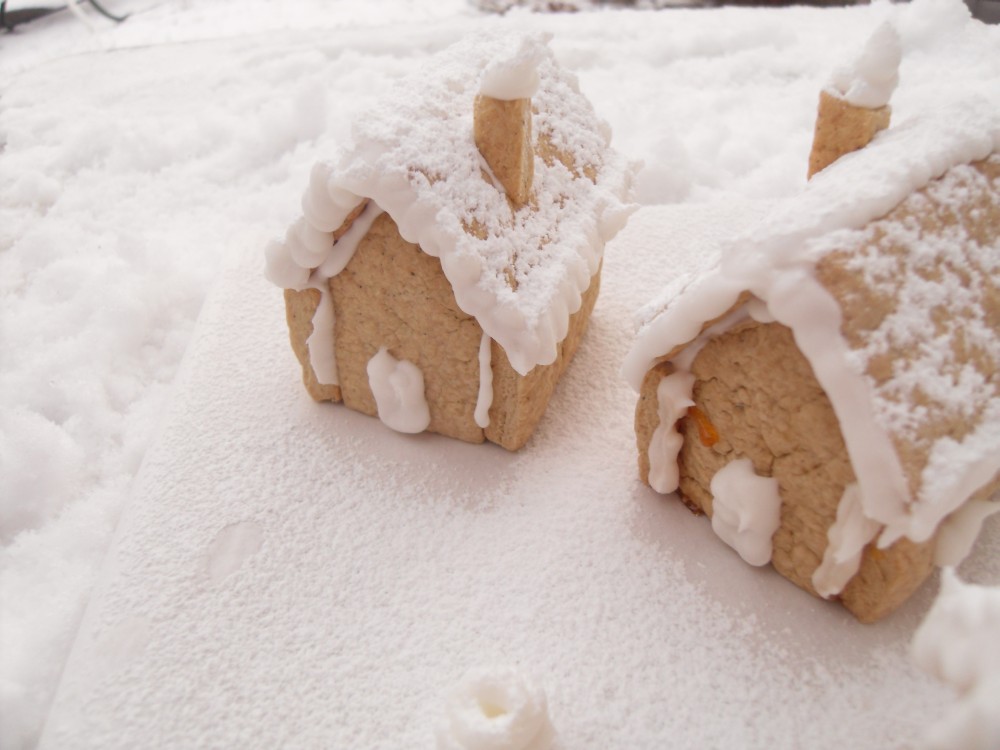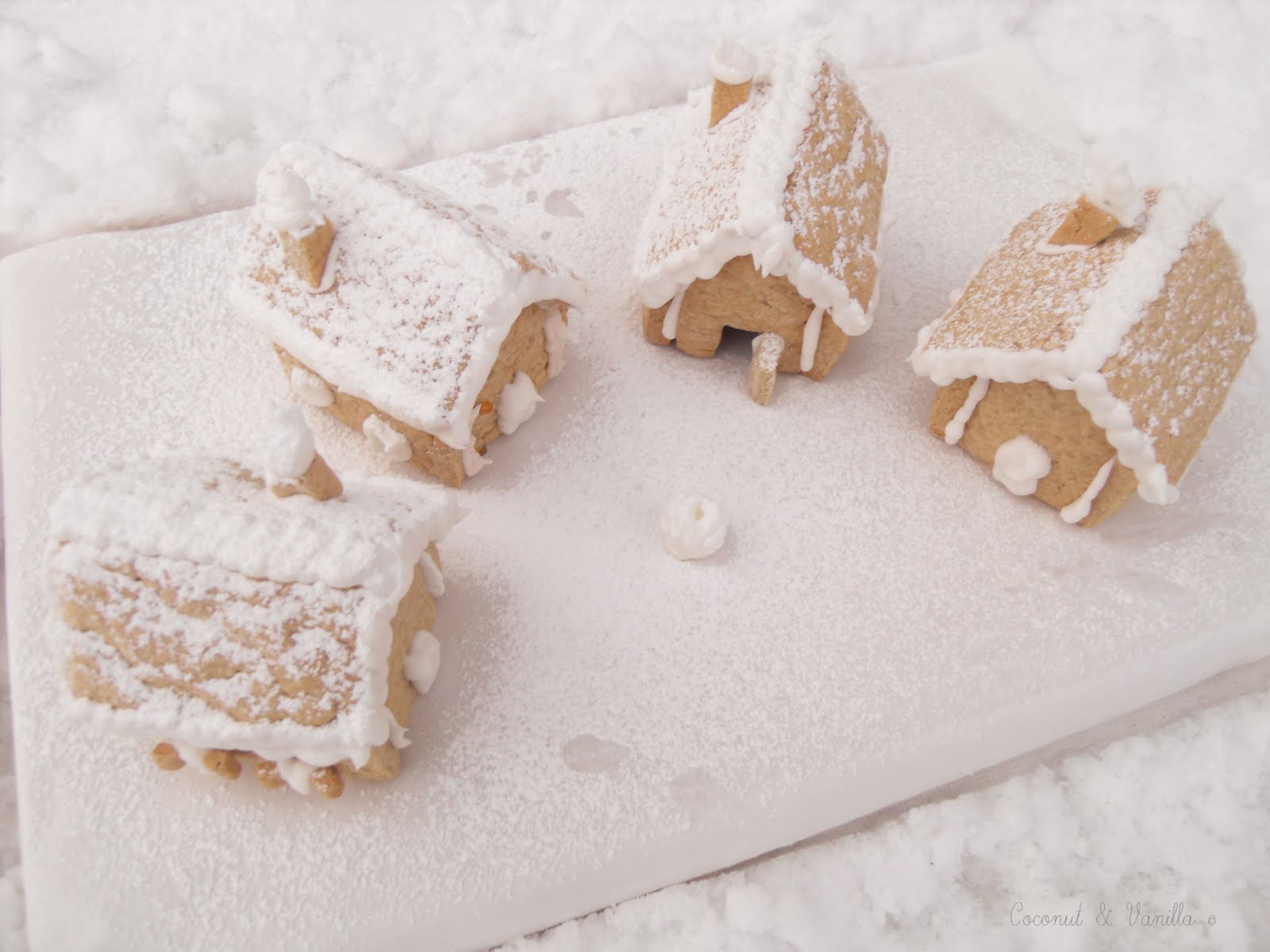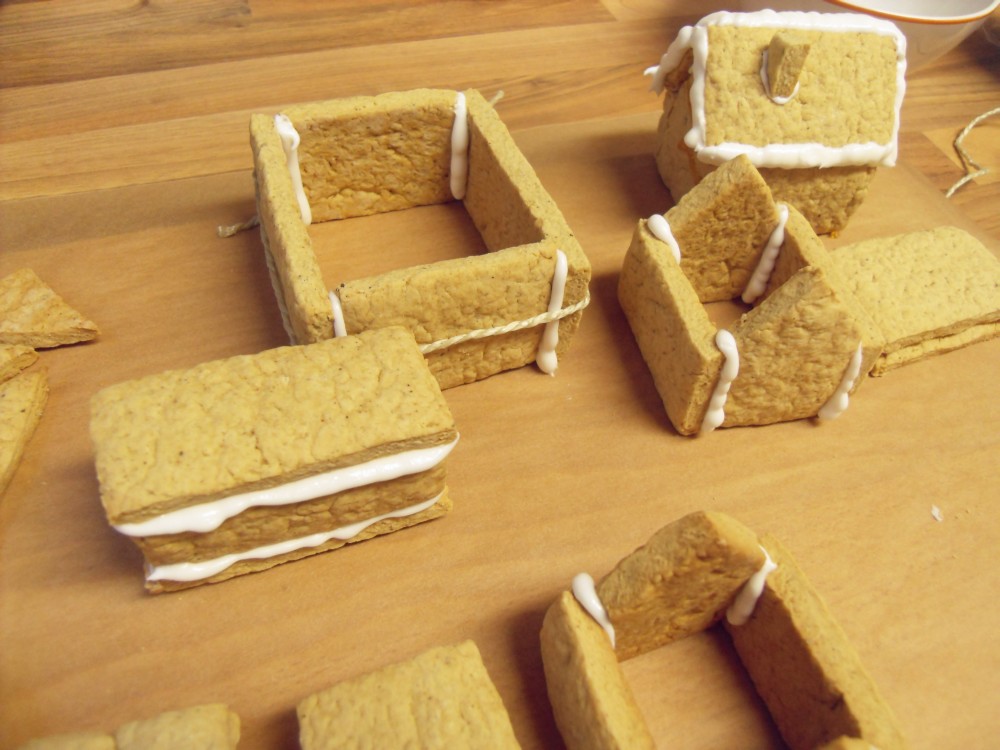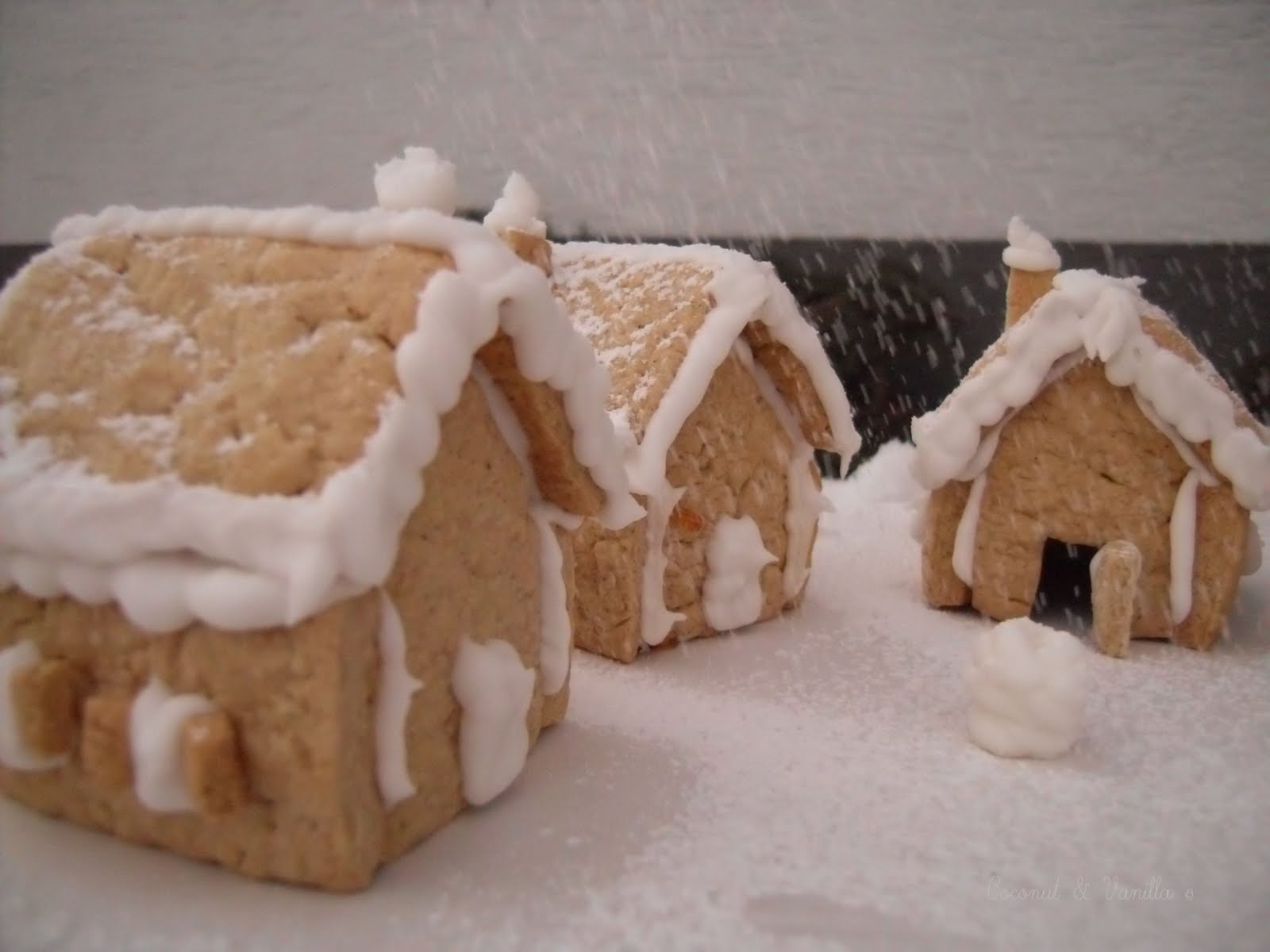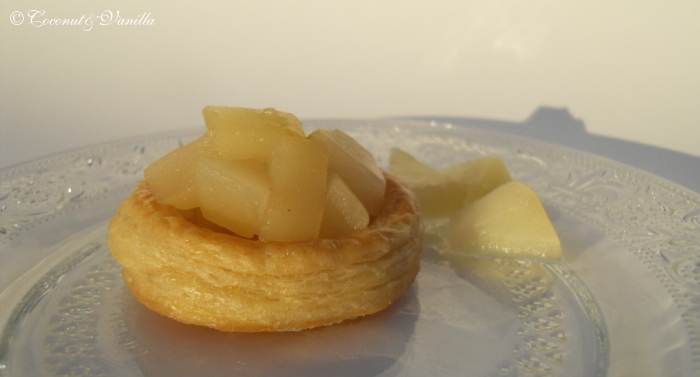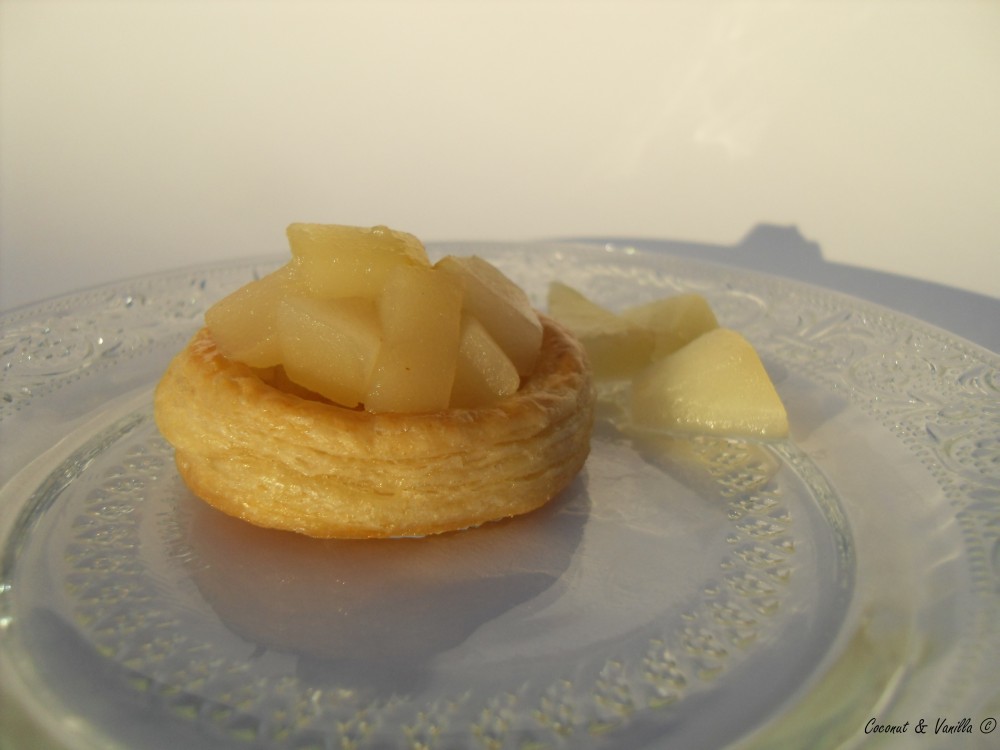The May 2010 Daring Bakers’ challenge was hosted by Cat of Little Miss Cupcake. Cat challenged everyone to make a piece montée, or croquembouche, based on recipes from Peter Kump’s Baking School in Manhattan and Nick Malgieri.

This month’s challenge was a challenge for me, not because of the recipe, but because we moved this month to a new flat, where we renovated a lot ourselves. Additionally we bought our first own kitchen, which had to be build up. We also took charge of the water supply, which was half a disaster, but now it works properly.
So kitchen is just (mostly) completely built up since yesterday, and also the water supply for the sink, the dishwasher and the washing machine.
But I managed to cook the crème patissiere the day before yesterday and baked today the choux. So I’m a day late, but I’m very proud, that I managed it anyway.

The recipe was very easy, although the choux were very flat, because the dough was too runny. The just flattened, after I piped them on the baking sheet. I didn’t taste the piece montée alltogether, because it’s our dessert after dinner later. But I tasted the choux with the chocolate glaze, which is very good, just as well as the vanilla crème patissier. So we are really looking forward to this evenings dessert!
I will definitely make this recipe again, because it’s easy and tasty. Although I won’t assemble the choux to a mount. They are good to eat just one or two in between.
I made the recipe, as it stands below. You get as much filled choux as you see in my picture (for a small mount). But I had double as much choux leftover without filling (very sad). So if you want to fill them all instantly, make the doubled batch crème patissiere. Or otherwise keep the leftover choux until you want to fill them in an airtight container and the make another batch crème patissiere to fill them right away, when you need them.
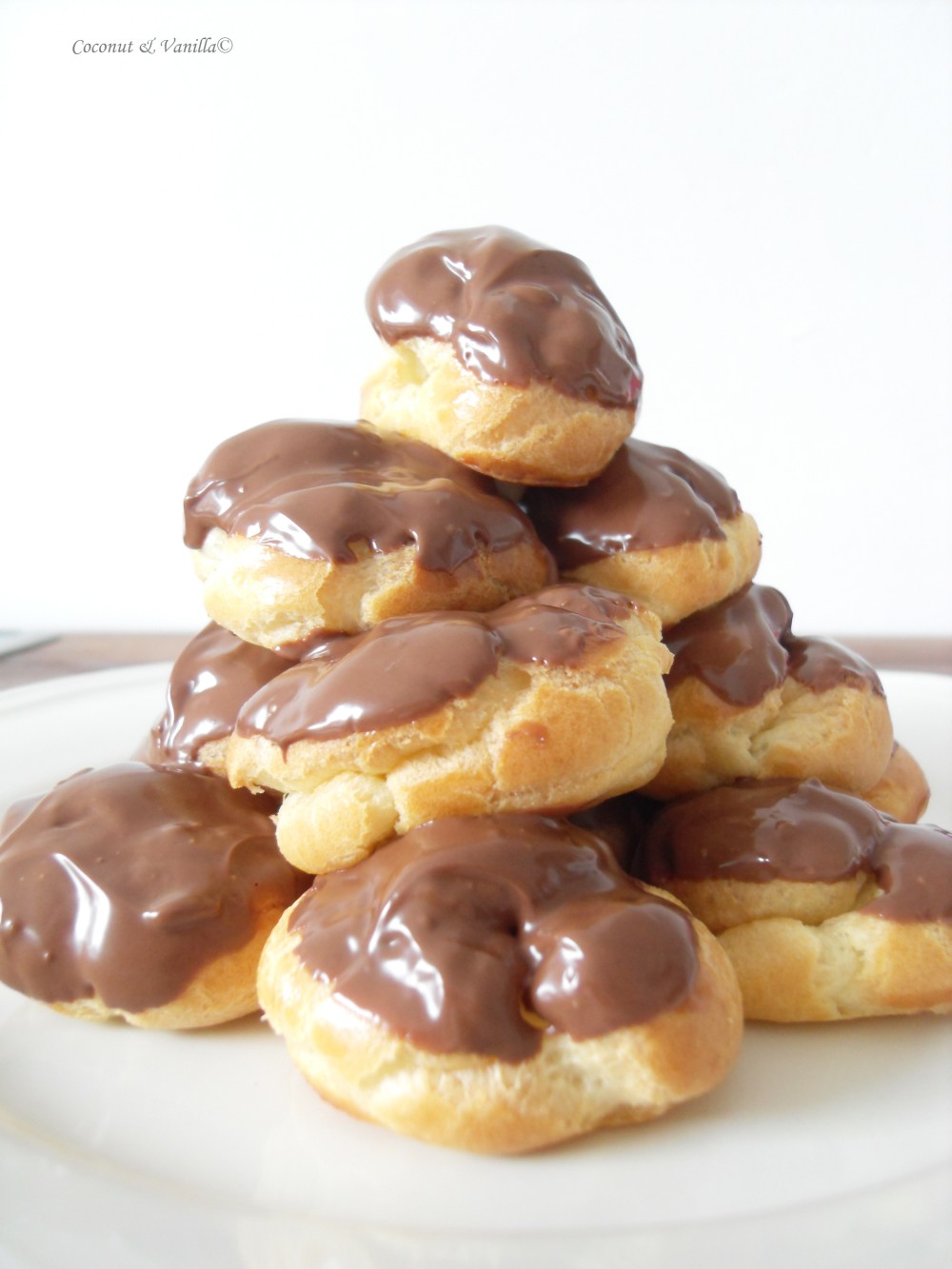
Recipe
Piece Montée
Vanilla Crème Patissiere (Half Batch)
Ingredients:
1 cup (225 ml.) whole milk
2 Tbsp. cornstarch
6 Tbsp. (100 g.) sugar
1 large egg
2 large egg yolks
2 Tbsp. (30 g.) unsalted butter
1 Tsp. Vanilla
Dissolve cornstarch in ¼ cup of milk. Combine the remaining milk with the sugar in a saucepan; bring to boil; remove from heat.
Beat the whole egg, then the yolks into the cornstarch mixture. Pour 1/3 of boiling milk into the egg mixture, whisking constantly so that the eggs do not begin to cook.
Return the remaining milk to boil. Pour in the hot egg mixture in a stream, continuing whisking.
Continue whisking (this is important – you do not want the eggs to solidify/cook) until the cream thickens and comes to a boil. Remove from heat and beat in the butter and vanilla.
Pour cream into a stainless steel/ceramic bowl. Press plastic wrap firmly against the surface. Chill immediately and until ready to use.
For Chocolate Pastry Cream (Half Batch Recipe):
Bring ¼ cup (about 50 cl.) milk to a boil in a small pan; remove from heat and add in 3 ounces (about 80 g.) semisweet chocolate, finely chopped, and mix until smooth. Whisk into pastry cream when you add the butter and vanilla.
Pate a Choux
Yield: About 28
Ingredients:
- ¾ cup (175 ml.) water
- 6 Tbsp. (85 g.) unsalted butter
- ¼ Tsp. salt
- 1 Tbsp. sugar
- 1 cup (125 g.) all-purpose flour
- 4 large eggs
- for Egg Wash: 1 egg and pinch of salt
Pre-heat oven to 425◦F/220◦C degrees. Line two baking sheets with parchment paper.
Preparing batter:
Combine water, butter, salt and sugar in a saucepan over medium heat. Bring to a boil and stir occasionally. At boil, remove from heat and sift in the flour, stirring to combine completely.
Return to heat and cook, stirring constantly until the batter dries slightly and begins to pull away from the sides of the pan.
Transfer to a bowl and stir with a wooden spoon 1 minute to cool slightly.
Add 1 egg. The batter will appear loose and shiny. As you stir, the batter will become dry-looking like lightly buttered mashed potatoes.
It is at this point that you will add in the next egg. Repeat until you have incorporated all the eggs.
Piping:
Transfer batter to a pastry bag fitted with a large open tip (I piped directly from the bag opening without a tip). Pipe choux about 1 inch-part in the baking sheets. Choux should be about 1 inch high about 1 inch wide.
Using a clean finger dipped in hot water, gently press down on any tips that have formed on the top of choux when piping. You want them to retain their ball shape, but be smoothly curved on top.
Brush tops with egg wash (1 egg lightly beaten with pinch of salt).
Baking:
Bake the choux at 425◦F/220◦C degrees until well-puffed and turning lightly golden in color, about 10 minutes.
Lower the temperature to 350◦F/180◦C degrees and continue baking until well-colored and dry, about 20 minutes more. Remove to a rack and cool.
Can be stored in a airtight box overnight.
Filling:
When you are ready to assemble your piece montée, using a plain pastry tip, pierce the bottom of each choux. Fill the choux with pastry cream using either the same tip or a star tip, and place on a paper-lined sheet. Choux can be refrigerated briefly at this point while you make your glaze.
Use one of these to top your choux and assemble your piece montée.
Chocolate Glaze:
- 8 ounces/200 g. finely chopped chocolate (use the finest quality you can afford as the taste will be quite pronounced; I recommend semi-sweet)
Melt chocolate in microwave or double boiler. Stir at regular intervals to avoid burning. Use the best quality chocolate you can afford. Use immediately.
The May 2010 Daring Bakers’ challenge was hosted by Cat of Little Miss Cupcake. Cat challenged everyone to make a piece montée, or croquembouche, based on recipes from Peter Kump’s Baking School in Manhattan and Nick Malgieri.

This month’s challenge was a challenge for me, not because of the recipe, but because we moved this month to a new flat, where we renovated a lot ourselves. Additionally we bought our first own kitchen, which had to be build up. We also took charge of the water supply, which was half a disaster, but now it works properly.
So kitchen is just (mostly) completely built up since yesterday, and also the water supply for the sink, the dishwasher and the washing machine.
But I managed to cook the crème patissiere the day before yesterday and baked today the choux. So I’m a day late, but I’m very proud, that I managed it anyway.

The recipe was very easy, although the choux were very flat, because the dough was too runny. The just flattened, after I piped them on the baking sheet. I didn’t taste the piece montée alltogether, because it’s our dessert after dinner later. But I tasted the choux with the chocolate glaze, which is very good, just as well as the vanilla crème patissier. So we are really looking forward to this evenings dessert!
I will definitely make this recipe again, because it’s easy and tasty. Although I won’t assemble the choux to a mount. They are good to eat just one or two in between.
I made the recipe, as it stands below. You get as much filled choux as you see in my picture (for a small mount). But I had double as much choux leftover without filling (very sad). So if you want to fill them all instantly, make the doubled batch crème patissiere. Or otherwise keep the leftover choux until you want to fill them in an airtight container and the make another batch crème patissiere to fill them right away, when you need them.

Recipe
Piece Montée
Vanilla Crème Patissiere (Half Batch)
Ingredients:
1 cup (225 ml.) whole milk
2 Tbsp. cornstarch
6 Tbsp. (100 g.) sugar
1 large egg
2 large egg yolks
2 Tbsp. (30 g.) unsalted butter
1 Tsp. Vanilla
Dissolve cornstarch in ¼ cup of milk. Combine the remaining milk with the sugar in a saucepan; bring to boil; remove from heat.
Beat the whole egg, then the yolks into the cornstarch mixture. Pour 1/3 of boiling milk into the egg mixture, whisking constantly so that the eggs do not begin to cook.
Return the remaining milk to boil. Pour in the hot egg mixture in a stream, continuing whisking.
Continue whisking (this is important – you do not want the eggs to solidify/cook) until the cream thickens and comes to a boil. Remove from heat and beat in the butter and vanilla.
Pour cream into a stainless steel/ceramic bowl. Press plastic wrap firmly against the surface. Chill immediately and until ready to use.
For Chocolate Pastry Cream (Half Batch Recipe):
Bring ¼ cup (about 50 cl.) milk to a boil in a small pan; remove from heat and add in 3 ounces (about 80 g.) semisweet chocolate, finely chopped, and mix until smooth. Whisk into pastry cream when you add the butter and vanilla.
Pate a Choux
Yield: About 28
Ingredients:
- ¾ cup (175 ml.) water
- 6 Tbsp. (85 g.) unsalted butter
- ¼ Tsp. salt
- 1 Tbsp. sugar
- 1 cup (125 g.) all-purpose flour
- 4 large eggs
- for Egg Wash: 1 egg and pinch of salt
Pre-heat oven to 425◦F/220◦C degrees. Line two baking sheets with parchment paper.
Preparing batter:
Combine water, butter, salt and sugar in a saucepan over medium heat. Bring to a boil and stir occasionally. At boil, remove from heat and sift in the flour, stirring to combine completely.
Return to heat and cook, stirring constantly until the batter dries slightly and begins to pull away from the sides of the pan.
Transfer to a bowl and stir with a wooden spoon 1 minute to cool slightly.
Add 1 egg. The batter will appear loose and shiny. As you stir, the batter will become dry-looking like lightly buttered mashed potatoes.
It is at this point that you will add in the next egg. Repeat until you have incorporated all the eggs.
Piping:
Transfer batter to a pastry bag fitted with a large open tip (I piped directly from the bag opening without a tip). Pipe choux about 1 inch-part in the baking sheets. Choux should be about 1 inch high about 1 inch wide.
Using a clean finger dipped in hot water, gently press down on any tips that have formed on the top of choux when piping. You want them to retain their ball shape, but be smoothly curved on top.
Brush tops with egg wash (1 egg lightly beaten with pinch of salt).
Baking:
Bake the choux at 425◦F/220◦C degrees until well-puffed and turning lightly golden in color, about 10 minutes.
Lower the temperature to 350◦F/180◦C degrees and continue baking until well-colored and dry, about 20 minutes more. Remove to a rack and cool.
Can be stored in a airtight box overnight.
Filling:
When you are ready to assemble your piece montée, using a plain pastry tip, pierce the bottom of each choux. Fill the choux with pastry cream using either the same tip or a star tip, and place on a paper-lined sheet. Choux can be refrigerated briefly at this point while you make your glaze.
Use one of these to top your choux and assemble your piece montée.
Chocolate Glaze:
- 8 ounces/200 g. finely chopped chocolate (use the finest quality you can afford as the taste will be quite pronounced; I recommend semi-sweet)
Melt chocolate in microwave or double boiler. Stir at regular intervals to avoid burning. Use the best quality chocolate you can afford. Use immediately.

